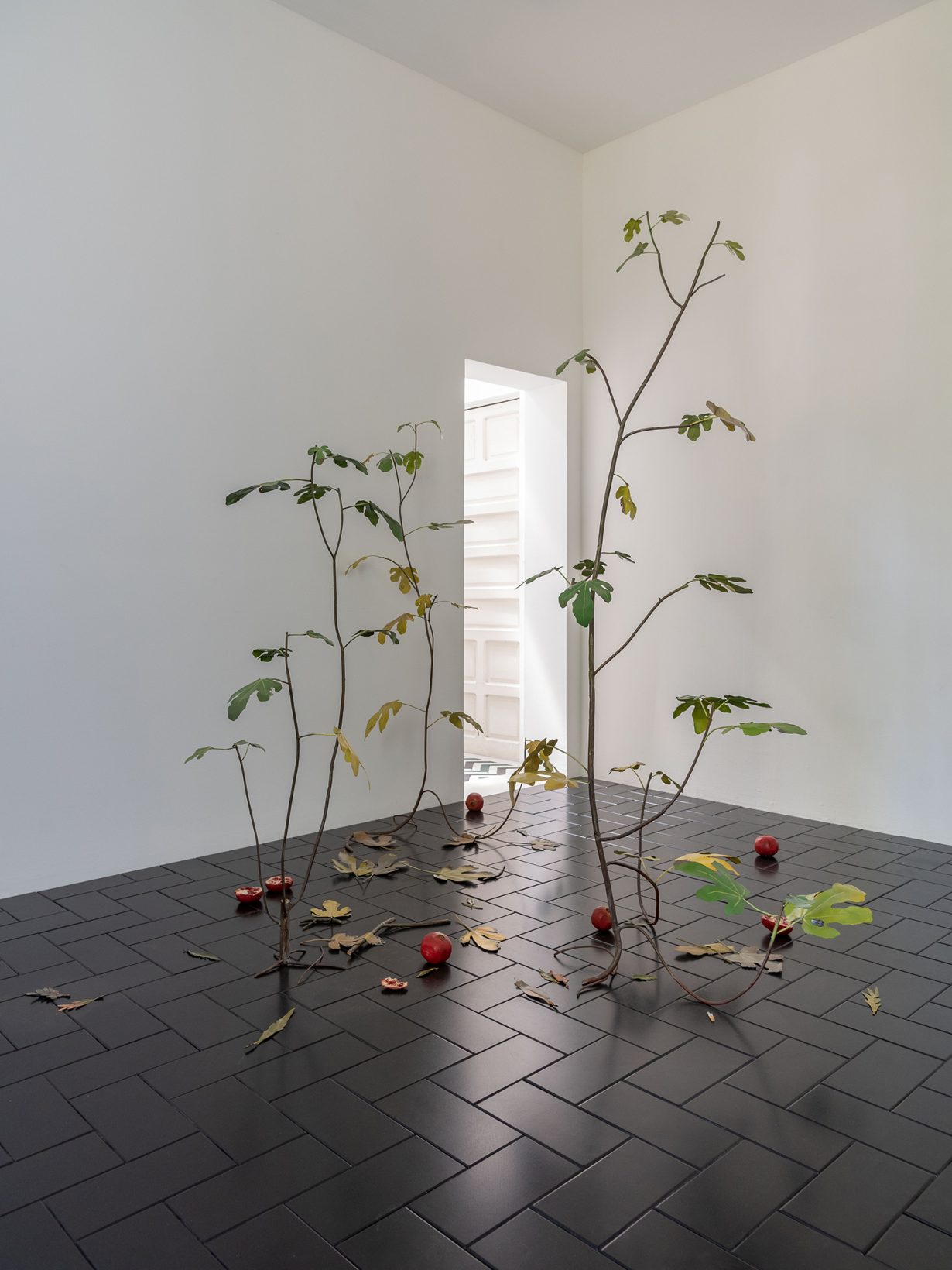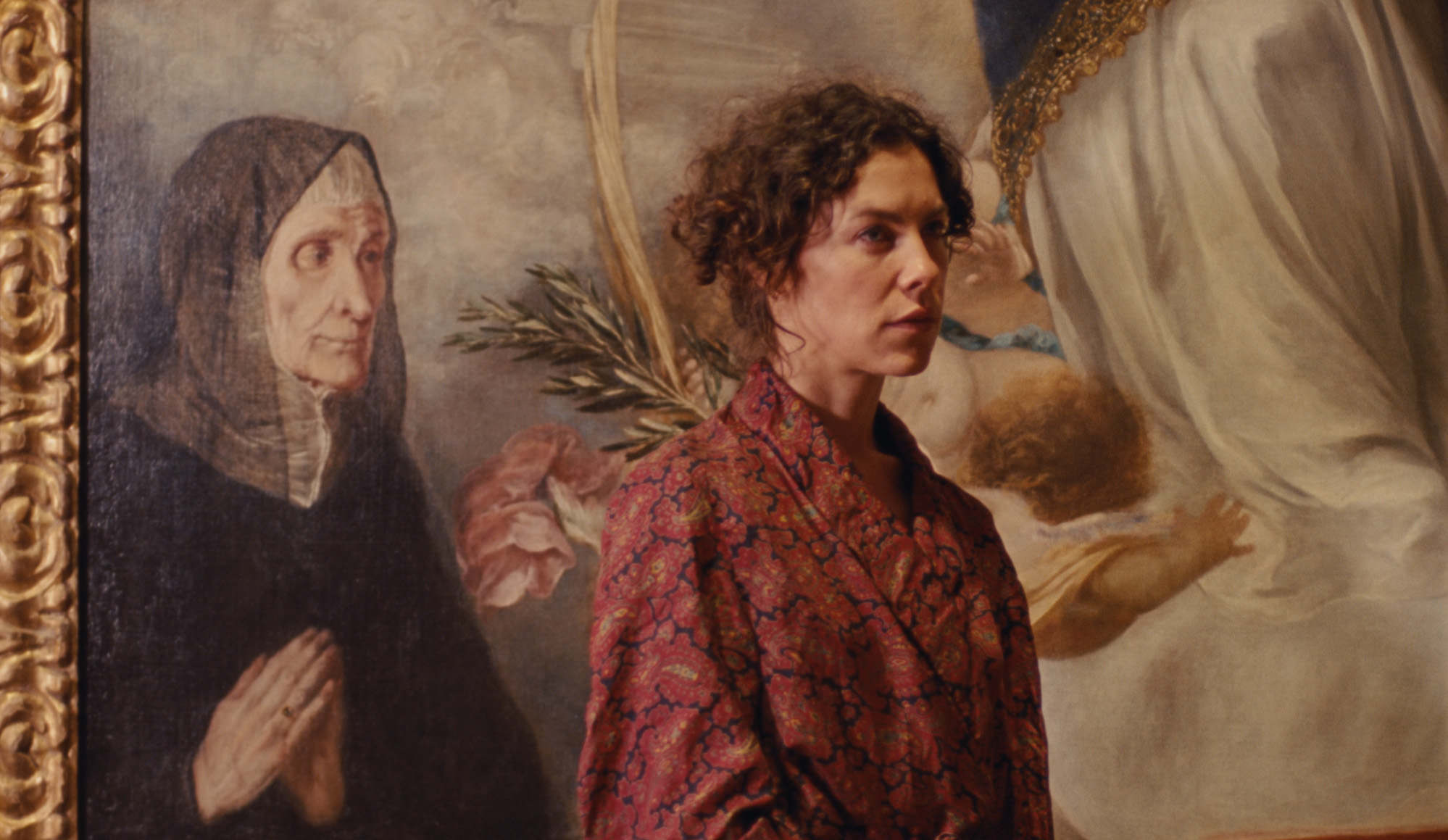This show of 13 artists considers the parallels between the Spanish writer’s time and our own
Flame-warped pots and pans are suspended along a length of steel cable that trails from an upper terrace to the bare concrete courtyard of the California College of the Arts below. In the school’s eerie, late-summer vacancy, the only sound is a faint patter as droplets of what the checklist tells us is diluted artificial saliva trickle down the sculpture’s pocked, distorted surfaces and are whipped into the air. The work, Tania Pérez Córdova’s Protest (2025), alludes to cacerolazo, a form of demonstration in which participants bang kitchenware to express political discontent. Catching brisk coastal winds in their contours, the melting metal shapes toss violently against their restraint, tacitly commenting on the contemporary rise of censorship and authoritarian government. Wordlessly, the work sets the stage for the atmospheric malaise that pervades Viaje a la luna (A Trip to the Moon), an exhibition featuring 13 artists that responds to the eponymous unrealised 1929 filmscript by Spanish poet and playwright
Federico García Lorca.
Lorca drafted Viaje a la luna in one afternoon during a nine-month stay in New York. Its surreal, allegorical images are redolent of dread and desire – a smothered bird, slamming doors, a Black boy vomiting, a white bed – the text abstracts social and personal repressions that Lorca observed and experienced during his sojourn in a strange land. After protracted filming, production was abandoned following Lorca’s premature death, in 1936, at the hands of Spanish nationalists. Fittingly, Lorca’s works in the show are latent with ghostly presences. The wavering lines of his ink and graphite drawing Muerte de Santa Rodegunda, Nueva York (Death of St Radegund, New York, 1929) depict a spectral figure with two hooplike heads and mandorla eyes vomiting and defecating in the throes of death.

Viaje a la luna plays on uncanny doublings that tease ideas of originality, absence and recurrence, reaching beyond the original script to consider parallels between Lorca’s time and our own. Writing in the aftermath of the stock market crash of 1929, Lorca’s view on industry was dim; of Wall Street, he wrote, ‘rivers of gold flow there from all over the earth, and death comes with it’. Several works consider the impact of technological transformation. In Lola Álvarez Bravo’s photomontage Computadora I (Computer I, c. 1954), two farmers are dwarfed by a spiring accumulation of calculators, switchboards and electrically augmented brains – suggesting the displacement of human labour by automation. This tension is latent in Nina Canell’s dynamic sculpture Tectonic Tender (2023), in which a glass dish is balanced between two conveyors, positioned side by side with steel rollers turning towards each other. Relying on these equal, opposing forces, the plate pitches erratically, never quite overstepping the tolerance threshold that sustains its precarious equilibrium.
Viaje a la luna is haunted by the past but also, as writes curator Diego Villalobos, by the possibility that history might recur. Extending the theme of historic cycles, Rosalind Nashashibi’s three-part film Denim Sky (2018–22) draws on a story by Ursula K. Le Guin in which cosmonauts collectively weave a narrative that alters the linearity of time. Over the course of four years, as the artist’s friends, family and community strive fitfully to understand one another across barriers of age and distance, we see disjointed scenes: thighs sunlit in a front passenger seat; sped-up film of an empty bench against a mist-laden horizon, figures walking jerkily by. These are sanguine alternatives to Lorca’s claustrophobic imagery , but they likewise cultivate the mystical and otherworldly in the real and intimate difficulties of building a world together. Subtly, in an imagistic accumulation to rival Lorca’s script, the exhibition takes its readings and tells us what is plain as day: the trouble’s already begun.
Viaje a la luna at CCA Wattis Institute for Contemporary Arts, San Francisco, through 11 October
